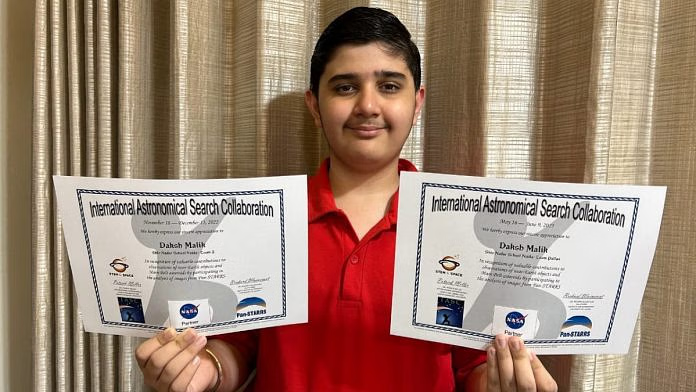
A young stargazer’s extraordinary achievement
Daksh Malik, a 14-year-old boy from Noida, India, has achieved a feat that has captured the attention of space enthusiasts across the globe. He recently discovered an asteroid, marking an extraordinary milestone for someone his age. What’s more, NASA has officially recognized his discovery and will soon allow Daksh the unique privilege of naming the asteroid once the verification process is complete.
A childhood fascination with the stars
Daksh’s journey into the world of astronomy began at an early age. Spending countless nights gazing at the sky, he found himself captivated by the mysteries of the universe—the stars, planets, and celestial phenomena. His curiosity about space deepened as he grew older, motivating him to actively pursue knowledge and engage with the field of astronomy.
The discovery: How it happened
Daksh’s breakthrough came when his school’s astronomy club introduced students to the International Asteroid Discovery Project (IAPD). This global initiative invites young enthusiasts to analyze telescope data in search of new asteroids. Daksh joined the project with enthusiasm, dedicating his time to carefully examining telescope images. His diligent efforts paid off when he identified a previously uncharted asteroid, temporarily designated as “2023 OG40” based on the time and date it was first observed. Once NASA completes its confirmation process, Daksh will have the honor of officially naming the asteroid—a privilege that few people in the world get to experience.
Why asteroid discoveries matter
Asteroids are not merely chunks of rock floating in space. They are remnants of the early solar system and hold valuable information about the origins of planets and celestial bodies. Most asteroids reside in the asteroid belt between Mars and Jupiter, but some follow unique orbits that intersect with Earth’s path.
Studying asteroids helps scientists uncover critical clues about the solar system’s formation, its history, and even its potential future. Notably, the largest asteroid in the belt, Vesta, spans a massive 329 miles in diameter. Daksh’s discovery adds a new piece to this cosmic puzzle, contributing to humanity’s understanding of the universe.
A future in the stars?
Daksh Malik’s remarkable accomplishment is not just a personal triumph; it’s an inspiration for budding astronomers worldwide. With his passion for space and dedication to exploring the unknown, Daksh exemplifies how curiosity and hard work can lead to groundbreaking achievements.
As he waits for NASA’s final confirmation, one thing is certain: Daksh’s story is just beginning, and the universe holds endless possibilities for his future.





